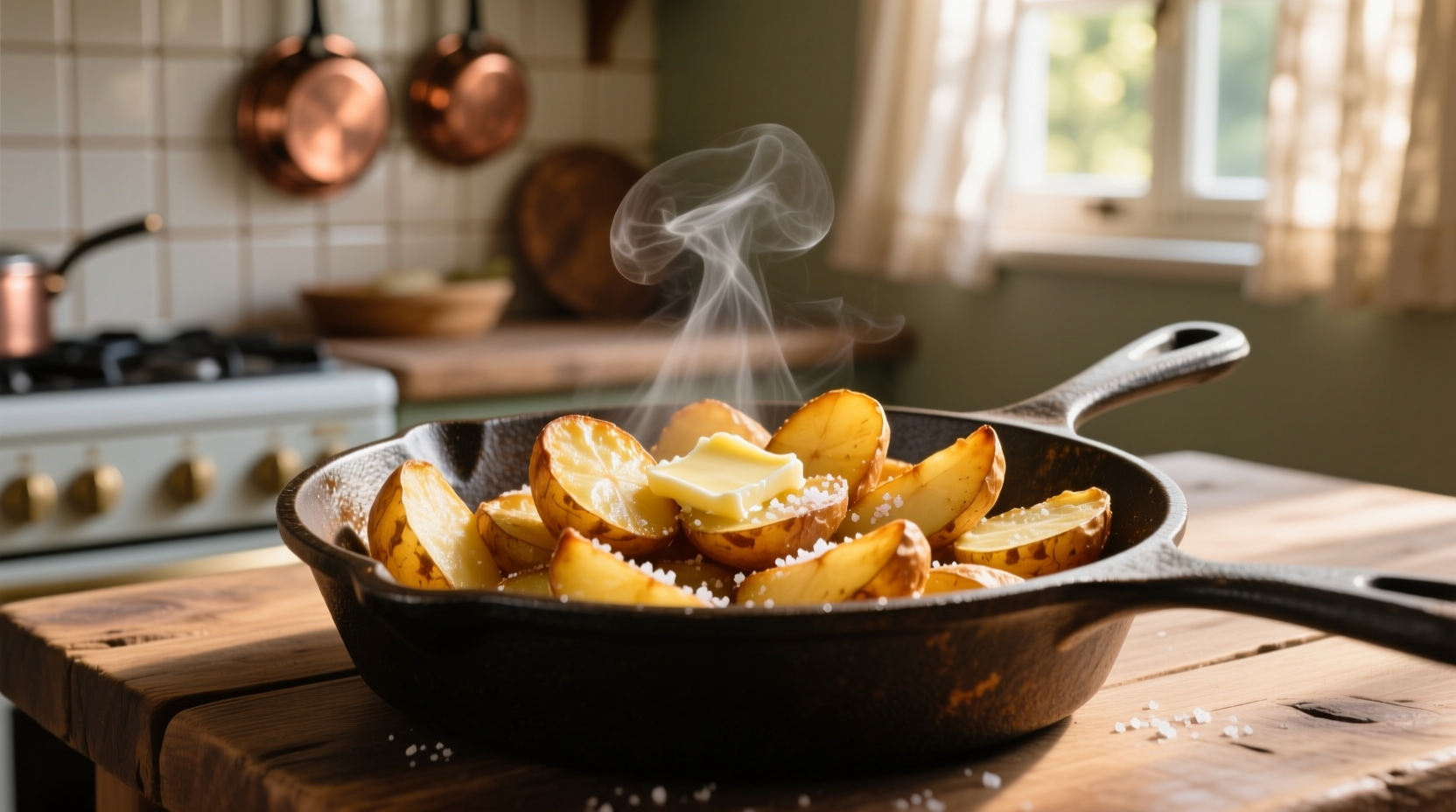Understanding the precise calorie content in fried potatoes helps you make informed dietary choices without sacrificing flavor. Whether you're monitoring your intake for weight management or simply curious about nutritional values, this guide delivers evidence-based information you can trust.
Why Calorie Counts Vary in Fried Potatoes
The calorie content in fried potatoes isn't fixed—it changes dramatically based on preparation techniques. When potatoes hit hot oil, they absorb fat while losing moisture, directly impacting their final nutritional profile. Research from the USDA FoodData Central shows that oil absorption rates typically range from 8-25% by weight, explaining why calorie counts fluctuate.
Professional chefs like Antonio Rodriguez emphasize that “the temperature control during frying determines how much oil gets absorbed. Too cool, and potatoes soak up excess fat; too hot, and they burn before cooking through.” This precision affects both taste and nutritional value.
Calorie Comparison Across Preparation Methods
| Preparation Method | Calories (per 100g) | Total Fat (g) | Carbohydrates (g) |
|---|---|---|---|
| Deep-fried (standard) | 312 | 14.7 | 37.1 |
| Pan-fried with minimal oil | 198 | 7.2 | 31.4 |
| Air-fried | 150 | 3.8 | 28.5 |
| Boiled (for reference) | 77 | 0.1 | 17.5 |
Data sourced from USDA National Nutrient Database (Food ID: 170243) and peer-reviewed research on oil absorption during frying processes.
Key Factors That Change Calorie Content
Oil Selection Matters More Than You Think
Different oils contribute varying calorie densities. While all cooking oils contain about 120 calories per tablespoon, their smoke points and chemical compositions affect absorption rates. Canola oil (smoke point 400°F) typically results in lower absorption than olive oil (smoke point 375°F) when frying at standard temperatures.
Serving Size Reality Check
Restaurant portions often contain 3-4 times a standard serving. A typical fast-food medium fries order (117g) delivers approximately 365 calories—nearly double what most people estimate. Measuring portions at home prevents unintentional overconsumption.
Potato Variety Impacts Nutritional Profile
Russet potatoes absorb more oil than waxy varieties like Yukon Gold due to their higher starch content. This seemingly small difference can add 20-30 extra calories per 100g serving when deep-fried.
Practical Strategies for Lower-Calorie Fried Potatoes
You don't need to eliminate fried potatoes from your diet—just optimize your approach:
- Pre-cook potatoes by boiling or microwaving before frying to reduce oil absorption time
- Use a thermometer to maintain oil temperature between 350-375°F for optimal results
- Drain properly on wire racks instead of paper towels to prevent steam-induced oil reabsorption
- Season after frying to avoid lowering oil's smoke point with salt during cooking
- Try the double-fry method at professional kitchens use—first at lower temperature to cook through, then briefly at higher heat for crispness

Putting Calories in Context
While fried potatoes contain more calories than boiled versions, they can fit within balanced eating patterns. The American Heart Association recommends limiting fried foods to occasional consumption rather than elimination. A single serving (100g) represents about 15-20% of daily calorie needs for moderate activity levels, making portion control essential.
Remember that fried potatoes still provide valuable nutrients—potassium, vitamin C, and fiber—especially when prepared with skin intact. The key is understanding how preparation methods transform their nutritional profile.
Frequently Asked Questions
How many calories in 100g of french fries?
Standard deep-fried french fries contain approximately 312 calories per 100g serving. This can vary between 280-365 calories depending on oil type, cooking temperature, and potato variety used in preparation.
Are air-fried potatoes significantly lower in calories?
Yes, air-fried potatoes typically contain about 150 calories per 100g—nearly half the calories of deep-fried versions. This reduction comes from minimal oil usage (1-2 teaspoons versus multiple cups for deep frying) while maintaining similar texture through rapid hot air circulation.
Does the type of oil affect calorie content in fried potatoes?
While all cooking oils contain approximately 120 calories per tablespoon, the type of oil affects how much gets absorbed during frying. Higher smoke point oils like avocado or peanut oil allow for proper temperature control, reducing absorption rates compared to lower smoke point oils like unrefined olive oil.
How can I reduce calories when making fried potatoes at home?
To reduce calories: 1) Pre-cook potatoes by boiling before frying, 2) Maintain precise oil temperature (350-375°F), 3) Use minimal oil with spray options, 4) Drain on wire racks instead of paper towels, and 5) Choose air frying for 50% fewer calories while maintaining crispness.











 浙公网安备
33010002000092号
浙公网安备
33010002000092号 浙B2-20120091-4
浙B2-20120091-4